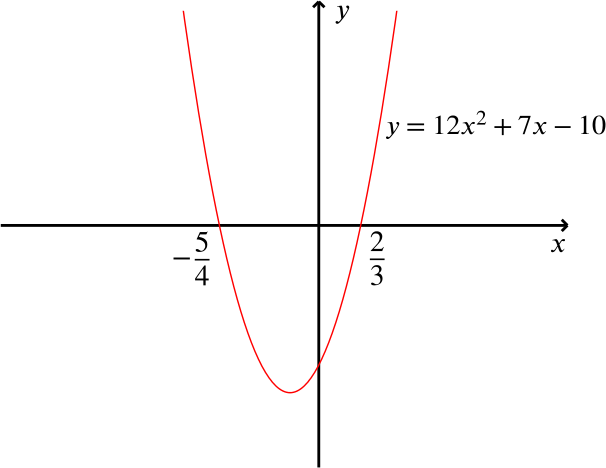- Find the range of values of \(x\) for which the expression \(12x^2+7x-10\) is negative.
This is the same as asking: when is the curve \(y = 12x^2+7x-10\) below the \(x\)-axis?
Let’s start by finding when \(y = 0\). We can use the quadratic formula here, giving the roots as \[\frac{-7 \pm \sqrt{49 + 480}}{24} = -\dfrac{5}{4}\ \text{and}\ \dfrac{2}{3}.\]
(We could factorise here, but the factorisation \((3x-2)(4x+5)\) could take us a while to spot.)
The coefficient of \(x^2\) is positive here, so the curve is ‘vertex-down’. We have enough information now to sketch the curve.

So the expression \(12x^2+7x-10\) is negative for \(-\dfrac{5}{4}<x<\dfrac{2}{3}\).
- Find the range of values of \(c\) for which the expression \(x^2+4x+c\) is always positive.
We note that since the coefficient of \(x^2\) is positive, \(x^2+4x+c\) will always be positive for some values of \(x\), and the curve \(y=x^2+4x+c\) is ‘vertex-down’.
So the question is the same as asking: which values of \(c\) mean that the curve \(y = x^2+4x+c\) is always above the \(x\)-axis?
This means there are no roots for \(y = 0\), and so the discriminant must be negative.
So we have \(4^2-4c < 0\), or \(c > 4\).
Hence the expression is always positive if and only if \(c > 4\).
Alternatively we could complete the square here. The expression \(x^2+4x+c\) can be written \((x+2)^2 + c-4\), which is always positive if and only if \(c>4\).

